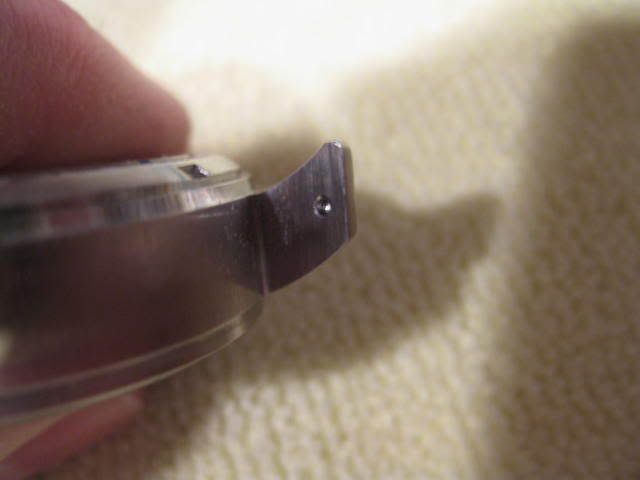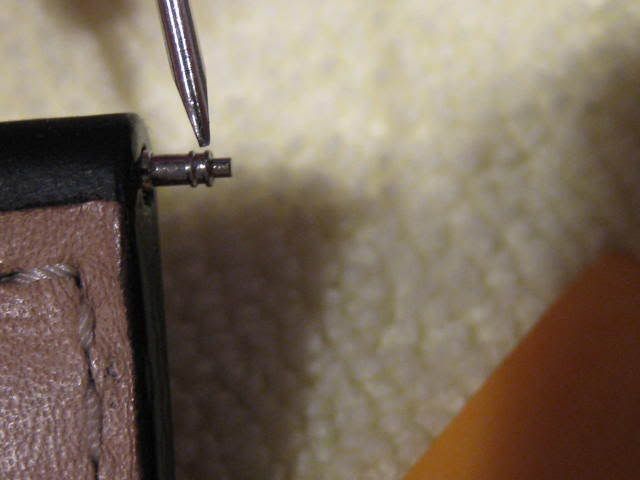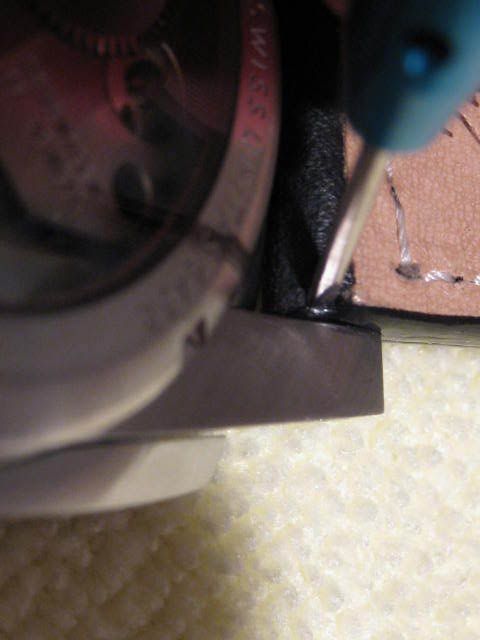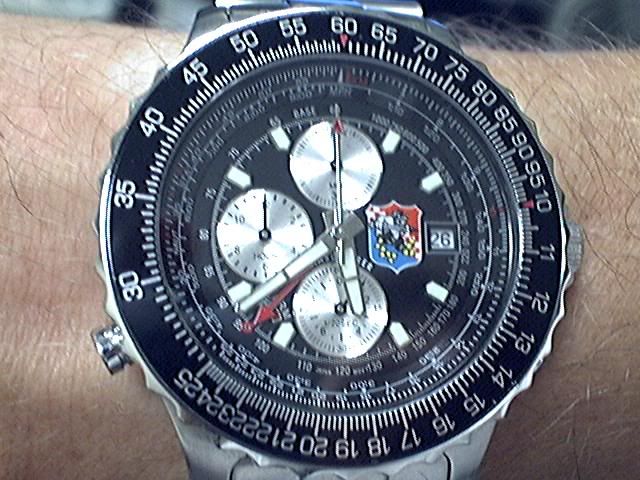I realize that this topic is outside the normal theme of this blog, but I wanted to get this off my chest, even if no one reads it!
An open letter to the IT community
I am one of you, nothing special, not some high powered executive with Microsoft, not some famous author of techie how-to books…just a regular work-a-day IT guy like most of you.
Also like most of you, I care about what I do. More specifically, I work in the IT shop of a large hospital, and I care about doing my job, because my job, sometimes directly, sometimes indirectly, can help patients get what they need. Whether it is shortening the wait time to register for a surgical procedure (when one is scared and not in the mood to stand around in line) or making sure your cancer radiation treatment is done correctly…I may be able to help.
I take this responsibility seriously. And that is why I am so frustrated when those around me do not.
What I am talking about is the frustration I experience when trying to do my job, and other people get in my way.
What do I mean by that? What I mean is…
When I call and you don’t answer your phone…and never call me back when I leave a detailed message telling you what I need.
When I email you, repeatedly, and I never hear back.
When I catch you in the hallway and give you a heads up about something that is coming and I get “oh yeah, no problem, just email me the details and I will get right on it”…and I do so. The next day I follow up with another email…nothing. The next day I catch you in your cubicle and you give me whatever the reason (excuse) is that you not only didn’t do it, you didn’t bother to reply to me and tell me why you didn’t….and assure me that you are going to do it right away. When I follow up again the next day, no reply again…and so on. So when I finally have to escalate it to your boss, as the whole project is held up waiting on you, you finally spring into action, get it done (it only took a few minutes!) and act like nothing is wrong, you are just a good old boy doing your job…ignoring the fact that a dozen other people couldn’t do theirs for the past week while you didn’t do it.
When I sit in our weekly meetings and bring up an issue over and over again, every week, for months, and you keep saying “ok no problem we will get to that asap”…and I keep telling my users “be patient, it is coming”…and when you finally get around to looking at it, you tell me it can’t be done after all…and I have to try and explain to my users why it can’t be done, even though I have been telling them it could, just be patient, week after week….
Do I sound bitter? Is this some harsh stuff? I guess so…but I have been disappointed so often I guess I am a bit bitter…and the kicker is – there is usually no reason!
Most of the time projects are delayed and users are inconvenienced not because of some arcane technical problem or the need to engineer some esoteric solution to a once-in-a-lifetime glitch…it is usually because someone…
Did not take the time to read my email (the information is in there, if you just read it!)
Did not take the time to ask questions (you have my desk, cellular and pager numbers, as well as my email…and I sit 50 feet down the hallway!)
Did not take the time to reply and let me know what is going on…
And so on.
So what is my point? How about this – could we all consider adopting…
The 10 Commandments of working together in a busy IT Department
1) READ YOUR EMAIL…ALL OF IT…ALL THE TIME!!!!
2) Reply to your email!!!!!! Even if it is nothing more than “I am swamped and can’t get to this right now”, at least I know you are aware of it, and I know a time frame for following up, and that you care enough to respond. Don’t just ignore it. I can’t tell you how frustrating it is to keep sending email after email, call after call, and get no acknowledgement in return. If you are dead, ok…but short of that, ACKNOWLEDGE ME!!!!
3) Commit!!! If we are planning a project and you have a task to do, don’t tell me off the top of your head that you will do it “asap” or “sometime soon”…think about your schedule, your workload, your priorities, and then tell me when you can do it.
4) Don’t be overly optimistic and give me a date that you can only keep if the stars align just right…give me a realistic date that you know you can make. It does way more harm than good to promise an early date and then break it – others have arranged their tasks and schedules around you – you need to be on schedule, no matter what it is!
5) Keep the commitment you made in #3 in the time frame you laid out in #4 !!!!!!!!
6) If you really do have unforeseen circumstances that keep you from honoring the commitment you made in #3 (and we all know that happens)…TELL ME ASAP! Don’t wait until I call you the day after it is due to follow up and then tell me you couldn’t keep your deadline…tell me BEFORE, as soon as you know, so I can adjust MY plans and the schedules of all the other people that are relying on you.
7) Communicate in general…tell me what is going on so I know. Did you talk to the vendor about the project and get a positive preliminary response? Great, let me know! Are you having trouble finding the part you need? Tell me NOW so I can either help or at the very least start formulating a Plan B in case it is needed. I can never have too much information, but I can always have too little.
8) Be Prepared… There is nothing more annoying that going through the hassle of arranging a meeting with 6 people, coordinating schedules, sending out the materials ahead of time, setting an agenda, etc…and then the first thing you hear in the meeting is “I haven’t had a chance to look over the material” or “Can you bring me up to speed, I don’t know what is going on”…we are all busy! Don’t waste everyone’s time by not thinking ahead. Even if you, goodness forbid, have to bring something home, or read through a proposal on your lunch hour instead of checking sports scores…BE PREPARED!
9) TAKE NOTES! So, we have our meeting, we get everyone up to speed, and we actually start to make progress. We make some decisions, agree on assignments for people, set follow up dates, etc… Then we meet again, and we hear “OK, I didn’t do that yet, I will do it this week” or “Sorry, forgot about that” or “OK, where are we?” It is as if we are starting from scratch every time we meet!!!! If you honestly failed in your attempt to do your job because of an unforeseen obstacle, that is fine, that is the information we need to plan our next steps. But if you forgot, or mixed up the details, or only did half of it…
IF YOU HAD WRITTEN IT DOWN AND PUT IN ON A TO-DO LIST AND CALENDERED A REMINDER TO YOURSELF, YOU PROBABLY COULD HAVE FINISHED IT CORRECTLY AND ON TIME LIKE YOU PROMISED!!!!
I am constantly amazed when I see a room full of people discussing large projects, making plans, follow ups, etc and no one is writing anything down….and then they are surprised when the realize they didn’t do their tasks at the next meeting. And then they have the gall to wonder why the project is taking so long!!!!
10) Just, plain think. Use common sense.
- If you are trying to decide on a date to roll out your new project…don’t open the calendar and pick a date that looks good, or coincides with the start of a new quarter or is on the CEO’s birthday…figure out how long the project is going to take and THEN decide on the date.
-Don’t plan on an unending series of best case scenarios happening back to back – plan in some wiggle room!
-Don’t budget a project based on how much you have to spend…budget based on how much what you want to do actually costs, after you add up all the costs involved (and add some wiggle room for the things you and the other people involved forgot or didn’t see, etc).
If the project you WANT proves to cost more than you HAVE, don’t be mad…thank your lucky stars you figured that out AHEAD of time, before you are halfway in with no way to finish. You can then be the hero! Wait until you have the money, or reduce the scope to what you CAN afford and communicate the new scope to the users so they can either adjust their expectations or come up with more money. But don’t start what you can’t prove on paper you can finish!
-Don’t ask more of people than they can give. For example, only use your IT staff or trained “superusers” for troubleshooting; most users don’t have the time, expertise or interest to do down and dirty troubleshooting. Only ask of people what they have the ability to do.
-TEST things before rolling them out!!! Whether it is a simple Microsoft Service Pack (when have those been simple?) or a complicated platform upgrade…don’t put something into production that you haven’t tested. Murphy loves computers – if something can go wrong, it just well might, so find out what might go wrong BEFORE you roll it out live. Even if it means delaying the roll out…you will be a hero for a clean Go Live a week late, but you will be a dog for rolling out on time with a week’s worth of problems.
Now, understand – I am not claiming to be perfect or to have all the right answers…in fact, most of the stuff above came to me through receiving a lot of hard knocks. So don’t say to yourself “oh he is full of @$%@#$, what does he know?” …
What I know is that if we all try to work together diligently, intelligently, and treat each other’s projects with as much importance as our own, we can get anything done. But if we don’t, we can mess up not only our own little projects, but projects that affect lots of other people, some of whom you may not even realize are in the picture.
I will leave you with one example to bring this point home.
I was working on a printer problem a few years ago…the user’s had to put a pre-printed form into a laser printer’s manual feed tray and print out a document that matched up with the blanks on the pre-printed form. Suffice it to say, this was not an exact science, and there was a lot of trial and error. So I am getting annoyed, as the users kept calling to report that a margin was off or a font was too big…so I am going back over there for what seemed like the 100th time.
And I see a guy in a black suit come out of the elevator and whisper to one of the nurses. She came over and was talking to someone else, etc…
Well, turns out he was the coroner, and the mother of a stillborn infant was waiting to go home, but couldn’t go, until the birth certificate was printed out verifying the still birth.
So there is this woman, some should-have-been-a-mother waiting in a wheelchair somewhere, grieving with a pain I can’t even begin to imagine…and she can’t go home. She can’t go back to the comfort of her own bed, her own family to mourn and try to start healing a wound that won’t ever go away. She can’t go, because this form isn’t lining up right in this printer. What to me was a pain in the @$# little project, hardly worth my time…was pretty much the only thing in the world that mattered to someone else, someone that I would never meet, but could have been me.
My point is not to depress you. It is simply to remind you. You never know who or what is depending on you. Do your job as best you can, that is all anyone is really asking. But… DO IT…don’t ignore it or put it off or think that it isn’t worth doing.









